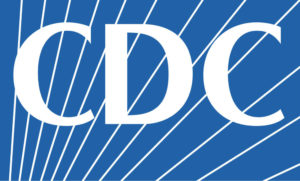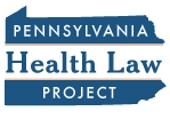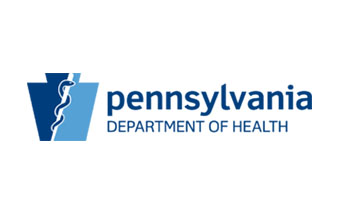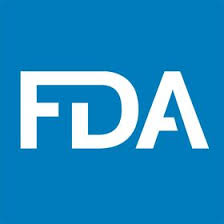SNAP Seeks End-of-Year Changes From Congress (Letter)
SNAP has asked Pennsylvania’s congressional delegation to support new funding for the CARES Act Provider Relief Fund, the elimination of scheduled Medicaid DSH cuts, and the continued suspension of Medicare sequestration cuts in any legislation Congress passes in the coming weeks.
 The Department of Health updated its
The Department of Health updated its  The number of people currently hospitalized with COVID-19 has doubled since late last month.
The number of people currently hospitalized with COVID-19 has doubled since late last month.
 During a news conference this week, Secretary Levine noted that Pennsylvania is now seeing more COVID-19 “long-haulers”: people who continue to experience COVID-19 symptoms over a period of months.
During a news conference this week, Secretary Levine noted that Pennsylvania is now seeing more COVID-19 “long-haulers”: people who continue to experience COVID-19 symptoms over a period of months. Last week we introduced you to
Last week we introduced you to  Department of Human Services
Department of Human Services A reminder that applications for Phase 3 general distribution payments are due Friday, November 6.
A reminder that applications for Phase 3 general distribution payments are due Friday, November 6. CMS’s online publication MLN Connects directs providers and others to its
CMS’s online publication MLN Connects directs providers and others to its  The CDC has updated its interim i
The CDC has updated its interim i
 The October 2020 MACPAC meeting opened with a panel discussion on restarting Medicaid eligibility redeterminations when the public health emergency ends. It included Jennifer Wagner, director of Medicaid eligibility and enrollment at the Center on Budget and Policy Priorities; René Mollow, deputy director for health care benefits and eligibility at the California Department of Health Care Services; and Lee Guice, director of policy and operations at the Department for Medicaid Services, Kentucky Cabinet for Health and Family Services.
The October 2020 MACPAC meeting opened with a panel discussion on restarting Medicaid eligibility redeterminations when the public health emergency ends. It included Jennifer Wagner, director of Medicaid eligibility and enrollment at the Center on Budget and Policy Priorities; René Mollow, deputy director for health care benefits and eligibility at the California Department of Health Care Services; and Lee Guice, director of policy and operations at the Department for Medicaid Services, Kentucky Cabinet for Health and Family Services.
 Included in this month’s edition are articles about:
Included in this month’s edition are articles about:
 The Department of Health updated its hospital guidance to clarify that
The Department of Health updated its hospital guidance to clarify that  ” Healthcare related expenses attributable to coronavirus may include items such as supplies, equipment, information technology, facilities, employees, and other healthcare related costs/expenses for the calendar year. The classification of items into categories should align with how Provider Relief Fund recipients maintain their records.” [emphasis added]
” Healthcare related expenses attributable to coronavirus may include items such as supplies, equipment, information technology, facilities, employees, and other healthcare related costs/expenses for the calendar year. The classification of items into categories should align with how Provider Relief Fund recipients maintain their records.” [emphasis added] The FDA has updated its
The FDA has updated its  Among the issues discussed at a health care forum were the concerns of hospital administrators about rising COVID-19 case counts and their worries over the adequacy of supplies of available hospital beds, drugs, and personal protective equipment in the near future; steps like enhanced access to telehealth that CMS has made available for Medicare beneficiaries to help them during the pandemic; the work – and continued existence – of the Regional Response Health Collaboratives that support long-term-care facilities fighting COVID-19 outbreaks and the possibility that those collaboratives may expire in December; and more.
Among the issues discussed at a health care forum were the concerns of hospital administrators about rising COVID-19 case counts and their worries over the adequacy of supplies of available hospital beds, drugs, and personal protective equipment in the near future; steps like enhanced access to telehealth that CMS has made available for Medicare beneficiaries to help them during the pandemic; the work – and continued existence – of the Regional Response Health Collaboratives that support long-term-care facilities fighting COVID-19 outbreaks and the possibility that those collaboratives may expire in December; and more. The CDC has updated its
The CDC has updated its  Created in July to help long-term-care facilities address their struggles responding to the COVID-19 emergency, the state has six RRHCs led by 11 Pennsylvania health systems. The RRHCs were created to provide clinical, operational, technical, and educational support to long-term-care facilities at a time when COVID-19-related deaths in such facilities accounted for more than 60 percent of all COVID-19 deaths state-wide. With financial backing from the federal CARES Act, the RRHCs support nearly 2000 long-term-care facilities of different types at which more than 127,000 Pennsylvanians currently reside.
Created in July to help long-term-care facilities address their struggles responding to the COVID-19 emergency, the state has six RRHCs led by 11 Pennsylvania health systems. The RRHCs were created to provide clinical, operational, technical, and educational support to long-term-care facilities at a time when COVID-19-related deaths in such facilities accounted for more than 60 percent of all COVID-19 deaths state-wide. With financial backing from the federal CARES Act, the RRHCs support nearly 2000 long-term-care facilities of different types at which more than 127,000 Pennsylvanians currently reside.